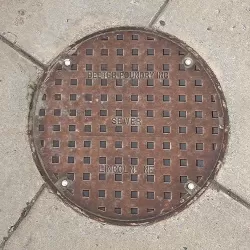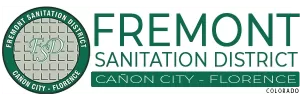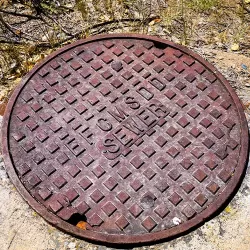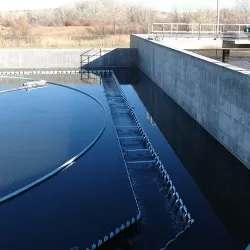
The Fremont Sanitation District is a Title 32 Special District that works like its own city, county or school district. It is a quasi-private public enterprise which is a non-profit corporation, owned by the residents within the District’s boundaries, and governed by the elected board members.
The seven member board is elected by ward to ensure representation from all parts of the county. Each member serves a four year term. The board hires a manager, adopts budgets, and sets rates, regulations and policies.
The District offers 24/7 availability, 365 days per year, with one hour response time to deal with emergency situations.
Collections Department
The Environmental Protection Agency mandates that the District check and clean the entire sewerage system which adds up to approximately 160 miles of pipe every five years. To accomplish this, the Collections team sends a camera into the sewer lines – a robot on wheels. An operator controls the camera remotely, looking for cracks or blockages in the pipes. About 4,000 feet of pipe are televised each week.
If there is an obstruction, they call in the heavy artillery. The team uses high pressure nozzles to blast and cut obstructions. They range from ultra high pressure nozzles for removing root balls to low pressure nozzles for simple cleaning. In a normal week, approximately 8,000 feet of pipe is cleaned.
Cracked or damaged pipes are logged into the Pipeline Assessment Certification Program and rated on a scale of 1 to 5 with 1 being for small cracks and 5 being for severe cracks, missing pieces of pipe or root infiltration. The Collections team accurately maps all trouble spots and catalogs the needed repairs for the Construction Department.
Construction Department

The Construction Crew has to work carefully, often in tight spaces, to be mindful of personal property lines and other utility lines as it digs down to the sewer lines. Unlike other utility lines, the sewer pipes must be maintained at a certain slope to ensure proper flow.
The Construction Department helps maintain the sewer lines in the streets all the way to the main interceptor that carries the waste to the treatment plant. Homeowners are responsible for the sewer line from their home to the main sewer line in the street.
Engineering Department
When the Collections Department finds a problem, the Engineering Department does research into the problem area. They provide maps and they lay out the project making sure everything runs smoothly and efficiently.
The Engineering Department works with the other utility companies, the city and the county to combine projects while keeping an eye on financial efficiency.
For example, if the City Water Department needs to dig up a street for a new water line, and we have old clay pipes that need to be replaced, we can save our customers money by sharing the construction costs with the water department.
Developers work closely with our Engineering Department from adding a single home on a vacant lot to a 400 dwelling subdivision.

 Construction of sanitary sewers began in Fremont County before the turn of the century. These systems discharged directly into the Arkansas River. By the end of 1910, complete sanitary sewerage systems were in place in south Cañon, the old part of Cañon City and Florence and are still in service today
Construction of sanitary sewers began in Fremont County before the turn of the century. These systems discharged directly into the Arkansas River. By the end of 1910, complete sanitary sewerage systems were in place in south Cañon, the old part of Cañon City and Florence and are still in service today Fremont Sanitation District processes wastewater from a service area that includes Cañon City, Lincoln Park, Florence and 13 state and federal prisons at the Rainbow Park Regional Wastewater Treatment Plant. The plant treats an average of 4.5 million gallons of wastewater every day.
Fremont Sanitation District processes wastewater from a service area that includes Cañon City, Lincoln Park, Florence and 13 state and federal prisons at the Rainbow Park Regional Wastewater Treatment Plant. The plant treats an average of 4.5 million gallons of wastewater every day.